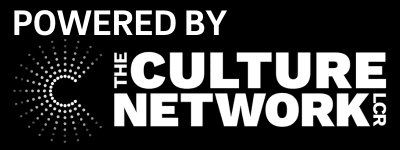By Ade Blackburn
Liverpool is famous for its culture and nightlife, here’s a selection of some of the key venues that have shaped the city’s musical history.
1. Eric’s

Eric’s opened its doors in 1976 and quickly became the venue to play for punk and alternative bands. Launched by Ken Testi and Roger Eagle, the original club was given the name ‘Eric’s’ as an antidote to disco clubs with names such as ‘Tiffany’s’ and ‘Samantha’s’.
The first band to appear at Eric’s was The Stranglers on 1st October 1976 and entry was just 60p. The club famously went on to stage gigs by future stars such as The Clash and Talking Heads.
The venue also helped launch the careers of many Liverpool groups, including Frankie Goes to Hollywood, Echo and the Bunnymen and The Teardrop Explodes.
2. The Blackie
The Blackie (now Black-E) opened in May 1968 with a commitment to combine a contemporary arts centre with a community centre.
The team of inspirational artists, led by Wendy and Bill Harpe, began their cultural adventures in the former Congregational Church in 1967. They created a centre where all the arts could engage with local people, young and old, disadvantaged and privileged.
The Blackie also staged significant events by known artists, including an early Elvis Costello show and exhibitions by Mark Boyle and John Latham.
3. Planet X
Established by the legendary Doreen Allen and Kenny Dawick, goth/alternative hangout Planet X was most famously based on Temple Street in the city centre.
Black and neon-pink outfits, outrageous haircuts and brothel creepers were de rigueur for the club’s regulars in the 1980s. The venue hosted some of the alternative scene’s biggest bands, including The Mission and a pre-fame Stone Roses.
Planet X was a true haven for Liverpool’s misfits and weirdos and is still celebrated today via the internet.
4. Cream

Cream was started by James Barton and Darren Hughes in the early nineties and within a few years had become one of the most famous clubs in the UK.
At its height in the mid-90s, the club attracted revellers from across the country, as well as celebrities and live performances from the likes of Robbie Williams, Pet Shop Boys, Kylie Minogue and The Chemical Brothers.
The success of Cream led to the first Creamfields festival in 1998, attracting 25,000 people and featuring live shows from Run DMC and Primal Scream.
5. Everyman Theatre
Founded in 1964 at Hope Hall (once a chapel) in an area of Liverpool noted for its bohemian environment, the Everyman built a reputation for ground-breaking work.
International stars and writers such as Julie Walters, Bill Nighy, Alan Bleasdale and Willy Russell, all considered the Everyman a home in their early years.
The downstairs Everyman Bistro was also an important hangout for creatives and hosted early gigs by the likes of The La’s and Levi Tafari.
6. The Kazimier

Much of the appeal in The Kazimier’s events was with the venue’s underground mystique. Many people will know the name only as a gig venue but it was also renowned for its cryptic and curious one-off parties.
They staged some amazing New Year’s Eve events under ‘The Kronos’ banner, featuring an array of weird and wonderful acts and giant props.
The Kazimier could also be a theatre, a cabaret, a cinema, or just an inspirational energy source. They hosted many memorable gigs during their eight-year reign, including shows by Les Savy Fav and Wooden Shjips.
7. The Cavern
The Cavern Club opened on Mathew Street in January 1957, initially as a jazz club. The venue later converted to rock ‘n’ roll, with The Beatles playing their first gig on the Cavern’s stage four years later in 1961.
Less well documented are the original venue’s later years, Queen appeared at the Cavern Club in the seventies, as well as a youthful version of Status Quo.
Suzi Quatro was the last major recording artist to perform at the club before its final closure in 1973.

